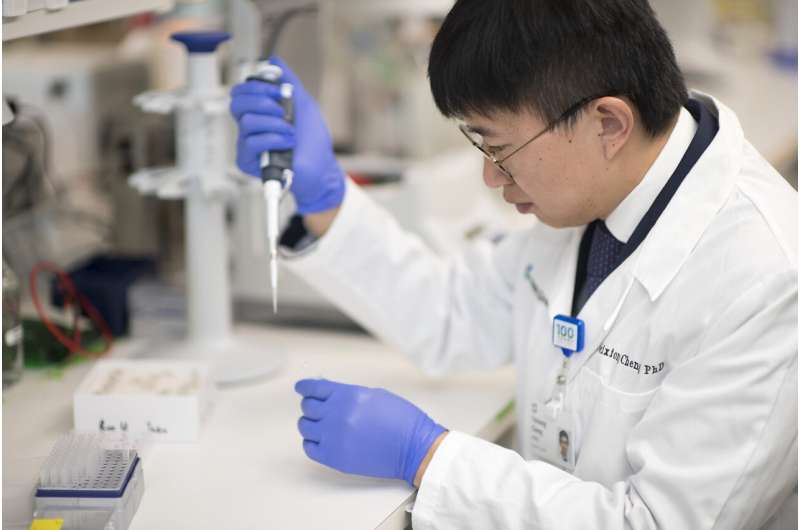A Cleveland Clinic-led research team used artificial intelligence to map out hundreds of ways that the virus that causes COVID-19 interacts with infected cells. Credit: Cleveland Clinic
A Cleveland Clinic-led research team used artificial intelligence to map out hundreds of ways that the virus that causes COVID-19 interacts with infected cells. Through this analysis, they identified potential COVID-19 medicines within thousands of drugs already approved by the FDA for other treatments.
The research focused on host-targeting therapies, which operate differently from other antivirals by disrupting the mechanisms viruses use to multiply and survive, rather than just blocking specific proteins within the cell. The research, published in Nature Biotechnology, presents a network called an "interactome," the interactions between COVID-19 virus proteins and host cell proteins.
This study built on existing data by employing additional molecular analysis techniques, confirming more than 200 interactions and discovering 361 new ones.
"Building a comprehensive network assists in targeting crucial protein-protein interactions instead of just proteins within the virus, offering promising host-targeting approaches for COVID-19 and future pandemics," says Feixiong Cheng, Ph.D., associate staff at the Genomic Medicine Institute. "Existing drugs could be used as repurposable treatments through targeting the pathways viruses use to infect the human body and survive."
When COVID-19 emerged as a pandemic in 2020, scientists produced initial sets of these interactions to aid in understanding how the virus invades host cells, multiplies and avoids an immune response.
An example in the new findings is a physical interaction between ORF3a, a viral protein responsible for cell death and immune suppression, and ZNF579, a human protein linked with cell genetic transcription. Dysregulated cells with higher levels of ORF3a showed lower levels of ZNF59, potentially illustrating a way that the virus survives through changing basic functions of infected cells, authors wrote.
After building the interactome and confirming it highlighted interactions not shown through previous studies, researchers laid out a strategy for screening existing drugs as potential host-targeting therapies.
The study identified 23 drugs with significant "network proximity," or how closely drug targets were connected to pathways between the virus and host cells identified in the interactome. Some of these drugs are already identified as disrupting COVID-19 virus processes or are already being studied in clinical trials, which supported the interactome as a valid tool for identifying useful drugs, authors wrote.
Researchers identified two hypertension drugs, carvedilol and hydrochlorothiazide, as potential antivirals. Serpil Erzurum, MD, Cleveland Clinic's Chief Research and Academic Officer and a leader of Cleveland Clinic's COVID-19 Research Intervention Team, previously tested carvedilol (a beta-blocker used to treat high blood pressure and prevent heart failure) in a clinical trial of pulmonary hypertension.
The study, which Dr. Erzurum co-authored, showed that carvedilol was associated with a 17% reduced risk of COVID-19 in Cleveland Clinic electronic health record system patient data. The next step would be validating carvedilol through more preclinical models or even clinical trials.
"Our study provides a powerful systems biology strategy to facilitate the search for an effective treatment for COVID-19 and future pandemics," says Dr. Cheng.
More information: Feixiong Cheng, A comprehensive SARS-CoV-2–human protein–protein interactome reveals COVID-19 pathobiology and potential host therapeutic targets, Nature Biotechnology (2022). DOI: 10.1038/s41587-022-01474-0
Journal information: Nature Biotechnology
Provided by Cleveland Clinic
























